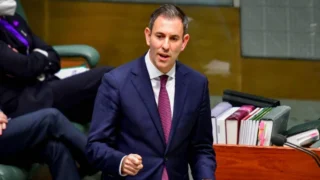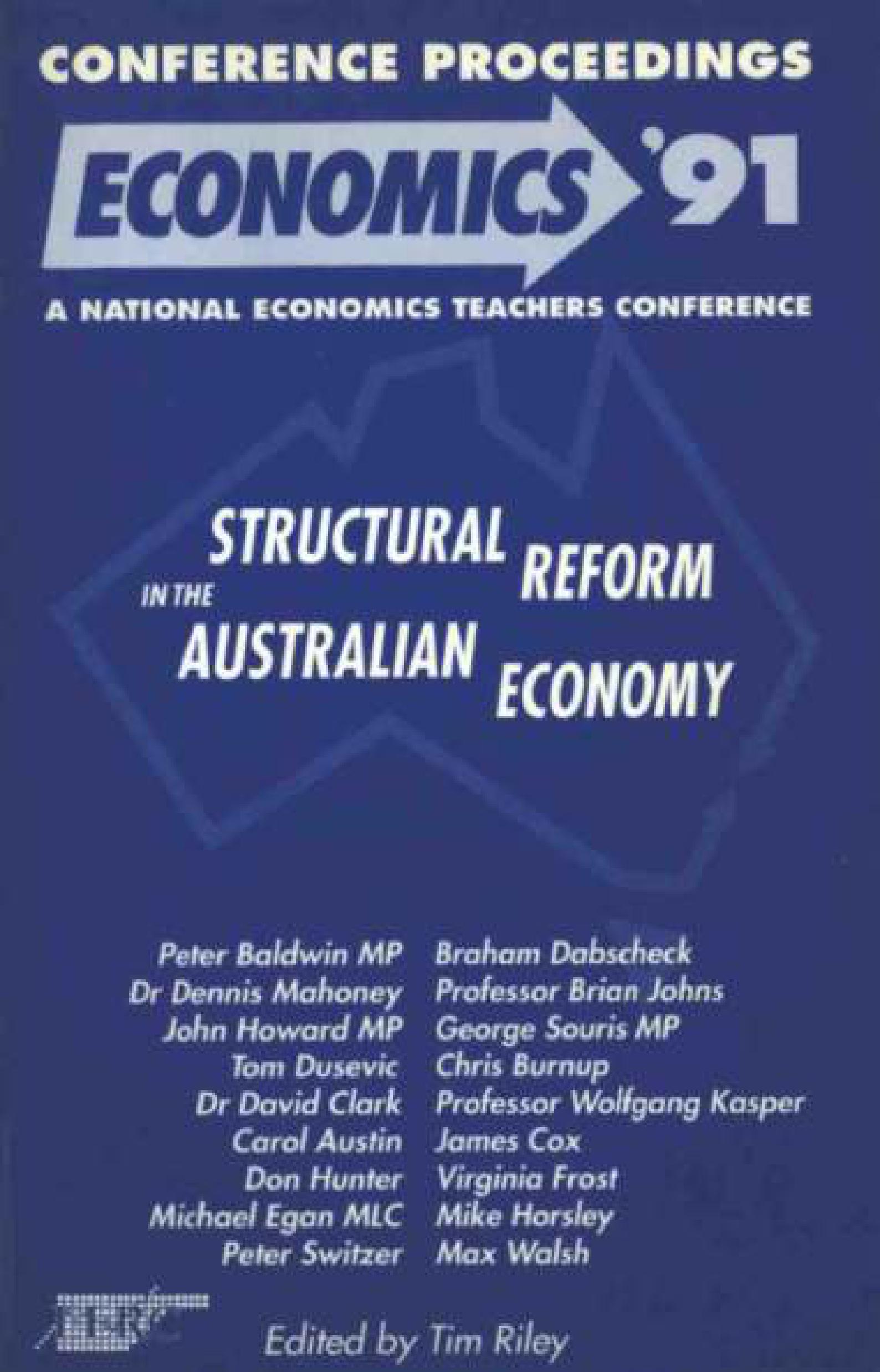

The ECONOMICS ’91 Conference served two purposes. First, it attempted to break down state barriers by bringing economics teachers from all Australian states and the ACT together to establish networks to facilitate an exchange of ideas, resources and experiences. Second, it was designed to cover a broad range of topics common to all Australian secondary economics courses by giving teachers access to a pool of high-profile economists, politicians, bureaucrats and educators.
Professional development of economics teachers is an essential part of the microeconomic reform of Australia’s secondary education system. Economics is a popular and relevant subject in our schools. Since developments in economic theory and policy at both the domestic and international levels are occurring rapidly, it is imperative that teachers are given opportunities to update their knowledge of content, skills and teaching strategies. Despite the multiplicity of Australian economics syllabuses. ECONOMICS ’91 proved that a national conference could break down state barriers and bring teachers together to discuss topics and issues of common interest.
The theme of ECONOMICS ’91 was ‘Structural Reform in the Australian Economy’, which acknowledged the importance of structural change and policy revision in Australia’s product and factor markets in the 1980s and 1990s. Controversy surrounds many of the policy proposals for economic reform (such as deregulation and privatisation) and teachers are charged with the job of simplifying the details for their students and giving an objective assessment of competing theories and policy prescriptions. For
these reasons, differing points of view on the same topic were outlined at ECONOMICS ’91 by politicians and economists.
Labour market reform was discussed by John Howard MP who outlined the Federal Opposition’s industrial relations policy based on voluntary work place agreements and enterprise bargaining. Peter Switzer and Braham Dabscheck from the UNSW were more supportive of the Accord process and the corporatist approach to incomes policy.
Similarly it was refreshing to contrast the approaches of George Souris MLA (NSW Greiner Government) and Mike Egan MLC (NSW Opposition) to the microeconomic reform of the public sector.
Aside from the contrast of viewpoints, conference participants gained an insight into the ‘hands on’ experience of experts such as Professor Brian Johns of the Trade Practices Commission who explains the contestability of markets and the procedures followed in framing Australian competition policy. Chris Burnup of the Business Council of Australia uses a logical and pragmatic approach in presenting an overview of the environmental debate in Australia. Carol Austin provides a fascinating discussion of the meaning of ‘competitiveness’ by drawing upon the conceptual framework of Michael Porter’s The Competitive Advantage of Nations. Virginia Frost and Mike Horsley have outlined their theory of learning styles and given some practical hints on various approaches to the teaching of economics and the use of textbooks in particular. Max Walsh discusses Australia’s economic future in a humorous yet optimistic fashion.
ECONOMICS ’91 Conference Proceedings is thus an exciting collection of readings on the Australian economy: its structural problems and the competing policy prescriptions. But the book is more than this. It summarises a professional development initiative by the Economics Education Resource Centre which exemplifies the important interface that is being built between educators, government, business, the media and academe.
— Tim Riley









